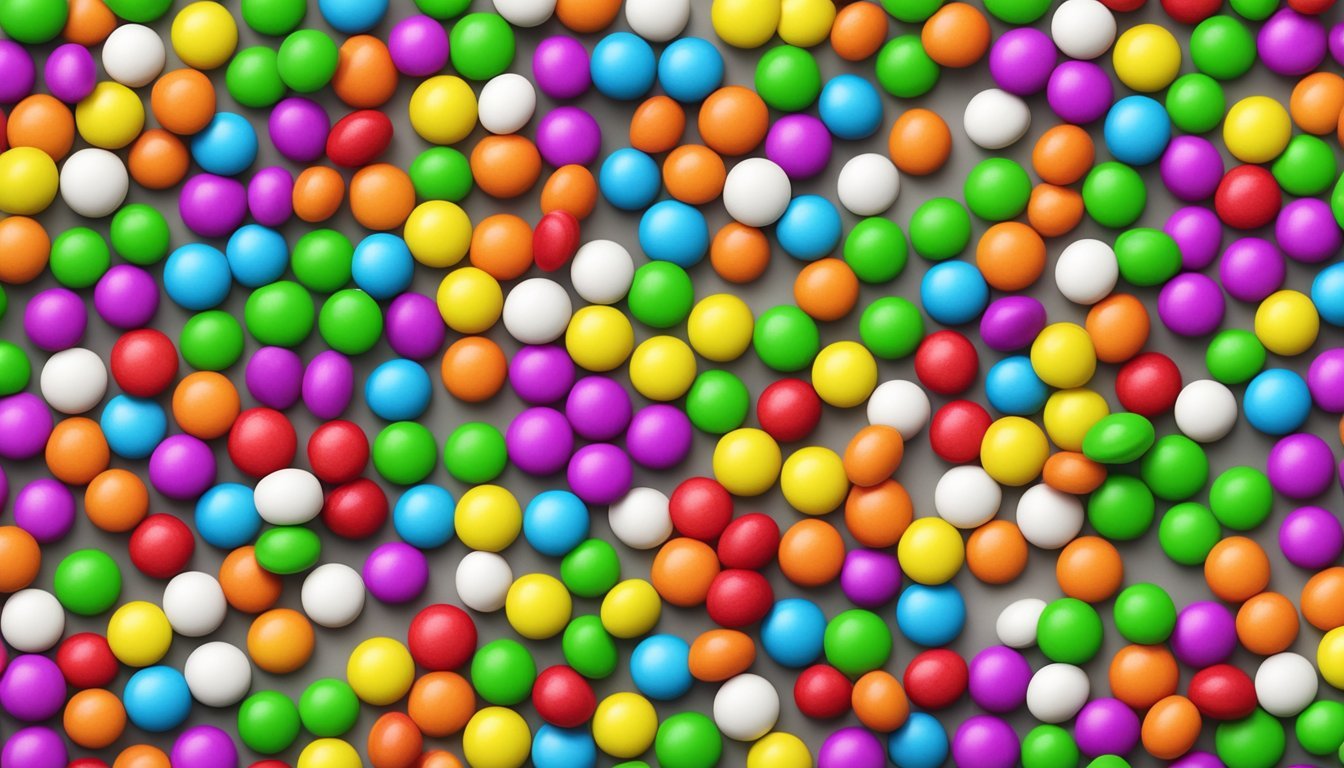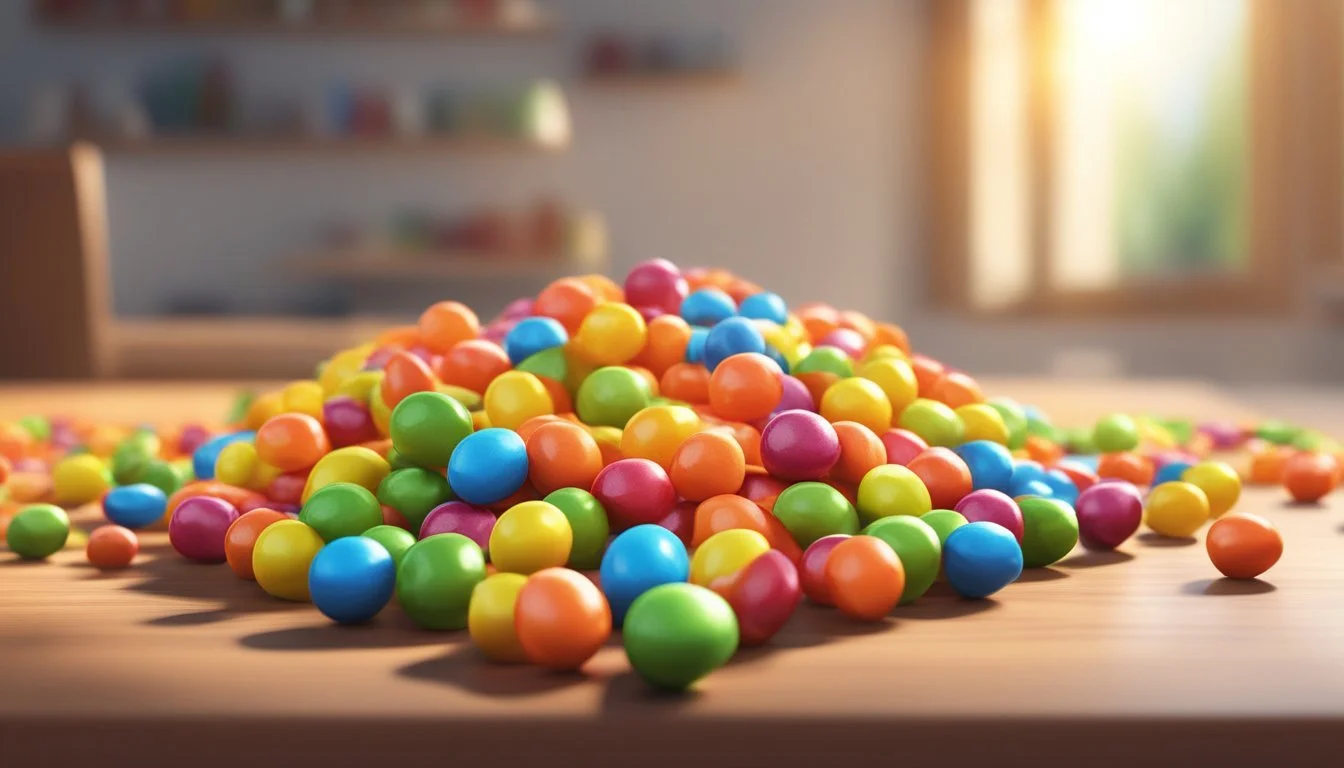How Long Do Skittles Last?
Unveiling Candy Shelf Life Secrets
Skittles (how long do skittles last?), the popular fruit-flavored candy, are known for their vibrant colors and hard, chewy texture. Consumers often wonder about the shelf life of such candies and how long they can be enjoyed past their expiration date. Skittles are primarily made of sugar and other preservatives, which gives them a naturally long shelf life compared to many other food items.
The shelf life of Skittles is extended due to their low moisture content, which inhibits the growth of microbes and makes them shelf stable. Typically, if kept in their original packaging and stored in a cool, dry place, Skittles can last several years beyond their best-before date without significant changes in taste or texture. While the candy may technically be safe to consume after this period, there may be a decline in quality.
Opened packages of Skittles don't last as long as those that remain sealed, but proper storage is key to extending their edibility. Once opened, if stored properly, Skittles can maintain their quality for a substantial period, sometimes exceeding five years. It is generally advised, however, to be cautious with any food product that has changed in appearance or developed an off odor since these changes can indicate spoilage.
Understanding Skittles
Skittles are a popular candy known for their vibrant colors and variety of fruity flavors. They possess a distinctive chewy texture that has contributed to their widespread appeal.
Composition and Ingredients
Skittles primarily consist of sugar, corn syrup (how long does corn syrup last?), and palm kernel oil, forming the base of these chewy treats. They are also composed of less than 2% of citric acid, (how long does citric acid last?) tapioca dextrin, modified corn starch, natural and artificial flavors, colors (Red 40 Lake, Titanium Dioxide, Blue 2 Lake, Yellow 5 Lake, Yellow 6 Lake, Blue 1 Lake, Red 40, Yellow 5, Yellow 6, Blue 1), sodium citrate, and carnauba wax.
Sugar and corn syrup are the main ingredients, providing the sweet taste and acting as the binding agents for the candy.
Palm kernel oil helps to create the smooth texture.
Artificial flavors and colors give Skittles their distinctive taste and appearance.
Flavor Profile
The flavor profile of Skittles is diverse, with each color representing a different fruit flavor. The original Skittles pack typically includes the following flavors:
Red: Strawberry
Purple: Grape
Yellow: Lemon
Green: Green Apple
Orange: Orange
These fruit-flavored candies are designed to be both sweet and tangy, providing a burst of flavor with each bite.
Color Varieties
Skittles come in a wide array of color varieties, each associated with a specific flavor. Here is a brief overview of the traditional color and flavor pairings found in a standard pack of Skittles:
Color Flavor Red Strawberry Purple Grape Yellow Lemon Green Green Apple Orange Orange
Beyond the classic packs, Skittles has released multiple other varieties featuring different flavors and color combinations, catering to a broad range of taste preferences.
Expiration Fundamentals
In the realm of confectionery, understanding the longevity of sweets like Skittles hinges on a few key elements: the expiration date, shelf life, and the manufacturer's recommendations. These factors dictate when Skittles are at their optimal quality and when they might need to be discarded.
Expiration Date Basics
The expiration date on a package of Skittles serves as the manufacturer's best estimate of when its product will cease to be at peak quality. Wrigley, the manufacturer, labels packages with a straightforward DDMMYY format, allowing consumers to easily determine the production date. Beyond this date, while the product may not necessarily be harmful, there's no guarantee that it will retain its intended flavor or texture.
Determining Shelf Life
Shelf life refers to the time frame in which Skittles maintain their best quality. Various factors influence this period, including storage conditions and whether the package remains unopened. As a general rule, unopened bags of Skittles are best consumed within two to three years of their production date, although they can last longer if kept in ideal conditions away from moisture and heat.
Manufacturer Guidelines
Manufacturers provide guidelines to help ensure that consumers experience their product as intended. According to manufacturer information, Skittles should maintain their quality for about two years from the production date if stored appropriately. Beyond this period, the quality may decline, and the candy's texture and taste could change. Always inspect the appearance and smell of Skittles if they are past the printed best before date to determine their condition.
Storage Recommendations
Proper storage is crucial to maximize the shelf life of Skittles. The recommendations vary depending on whether the package is opened or unopened and the temperature conditions.
Unopened Packs
Unopened packs of Skittles should be stored in a cool and dry place, such as a pantry. This environment reduces exposure to moisture and heat, which can degrade the candy's quality. Keeping Skittles at room temperature is typically sufficient to maintain their freshness until the best before date.
Pantry: Ideal for long-term storage.
Do not refrigerate: Refrigeration can introduce moisture due to condensation.
Opened Packs
Once a pack of Skittles is opened, it's vulnerable to air, moisture, and other environmental factors. Store them in an airtight container to maintain freshness.
Airtight container: Limits exposure to air and moisture.
Back into pantry: Keeps them away from heat and light.
Effect of Temperature
The texture and quality of Skittles are affected by temperature. They should be kept away from direct sunlight and high temperatures to prevent melting.
Avoid heat: High temperatures can cause melting and stickiness.
Freezer: Skittles can be stored in the freezer to extend their shelf life; however, they are susceptible to freezer burn if not stored in an airtight bag designed for freezing.
Spoilage and Preservation
The longevity of Skittles is affected by how they are stored and the signs of spoilage are crucial to ensure consumption safety. Knowing how to prevent spoilage can maintain the candy’s quality over time.
Signs of Spoilage
Skittles are unlikely to mold due to their low moisture content, but they can go stale or become hard. Signs of spoilage include a noticeable change in texture and a loss of the candy’s vibrant color. If Skittles have a strange odor or a rancid smell, this may indicate they are past their prime and should not be consumed.
Preventing Spoilage
To prevent Skittles from going bad, it's important to store them in a cool, dry place away from direct sunlight. Sealing them tightly after opening can reduce exposure to excessive moisture and air, which contributes to staleness. Avoiding high temperatures is key to preventing the candy from becoming hard or sticky.
Storage Tips:
Keep in airtight containers.
Store in a cool, dry environment.
Limit exposure to air.
Consumption Safety
Skittles are generally safe to eat for quite some time after production due to their low risk of bacterial growth. They do not become unsafe to eat quickly, but their quality might degrade over time. Before consumption, inspect the candies to ensure there is no visible spoilage or off-putting smell.
Quality Indicators of Skittles
When assessing the quality of Skittles, connoisseurs pay close attention to the texture and taste. These indicators can greatly affect the Skittles' enjoyment and can help determine how fresh they are.
Texture and Freshness
Skittles should have a distinct chewy center and hard outer shell. A fresh Skittle's texture is a primary indicator of its quality; they should be firm but not too hard, and the chewy center should offer a resistant but pleasant chewiness. If the Skittles have become excessively hard or have lost their chewiness, this indicates a decline in freshness.
Taste and Flavor Quality
Flavor is another crucial aspect; fresh Skittles offer vibrant and distinct taste profiles typical of their individual colors. Any dullness in flavor can suggest staleness. Skittles should have a fruity and tangy flavor that is consistent in quality across the package. If the flavors taste off or the vibrant taste typically associated with Skittles is muted, this could be a sign that they are past their optimal consumption period.
Effects of Improper Handling
Proper handling is critical in preserving the quality and texture of Skittles. Exposure to direct sunlight, heat, and moisture can cause significant changes to the candy's appearance and consistency.
Impact of Direct Sunlight and Heat
When Skittles are exposed to direct sunlight or high temperatures, they are susceptible to melting. The heat can cause the individual pieces to stick together, making them difficult to separate and consume. Furthermore, the vibrant colors may become discolored due to the breakdown of the dyes when subjected to prolonged periods of sunlight.
Moisture's Role in Deterioration
A high moisture environment can severely affect Skittles. The candy's moisture content is low, so any exposure to humidity can lead to a change in texture, making the pieces brittle and difficult to chew. Moisture can also contribute to the breakdown of the outer shell, potentially leading to a sticky surface that attracts more debris and bacteria.
Additional Considerations
When it comes to extending the shelf life of Skittles and considering whether to consume those past their expiration date, key factors to bear in mind are storage conditions and an understanding of the product’s properties.
Best Practices for Extending Shelf Life
Proper storage can significantly prolong the edibility of Skittles. They should be kept in their original packaging, as this helps maintain their intended texture and flavor. Once opened, transferring Skittles to an airtight container will protect them from moisture and other environmental factors that could hasten their degradation due to osmosis, which affects their chewy texture.
Tips for storage:
At room temperature: Ensure a cool, dry place away from direct sunlight.
After opening: Seal them in an airtight container or resealable bag.
In bulk purchase: Consider dividing them into smaller portions before storing, to maintain freshness over time.
Guidance on Consuming Expired Skittles
While Skittles can remain safe to eat after the expiration date, consumers should exercise caution. Running a quality check based on appearance and smell can help decide whether to consume or discard the candy. If Skittles show any signs of spoilage or an off smell, they should not be eaten. Generally, it is advisable to treat expired snacks with a degree of skepticism and prioritize safety.
Guideline for consuming expired Skittles:
Examine: Look for discoloration or a white coating, which indicates they're past their best.
Smell test: Any unusual odors suggest they should be discarded.
Taste test: If they pass visual and smell checks, try a small quantity to determine if the quality is satisfactory.
In summary, storing Skittles correctly can extend their shelf life, but consumers should heed guidelines when deciding to eat expired Skittles as a treat.
Closing Thoughts
When it comes to Skittles, the adage "taste the rainbow" speaks to the colorful and flavorful experience these candies offer. Maintaining that vibrant array of colors and rich quality of taste is a matter of how they are stored. For Skittles lovers, understanding the longevity of this delicious treat and ensuring safety in consumption is paramount.
Proper Storage:
Store Skittles in airtight containers to extend their shelf life.
Keep them in a cool, dry place to preserve their quality.
After Opening:
Once opened, Skittles can retain their tastiness for an extended period if stored correctly.
Shelf Life:
Skittles exhibit impressive longevity. However, factors like stickiness or a strange odor can be indicators of degradation.
When they are properly stored, Skittles can maintain their quality well beyond the printed expiration date, without compromising on taste or safety. It is noteworthy, however, to observe any changes in texture or smell that may signal that the candies are past their prime. Lastly, those who partake in the joy of tasting Skittles should always prioritize proper storage methods, including sealing the packaging after opening or transferring to airtight containers, to enjoy the full spectrum of flavors that Skittles are known for.







